Learn how to make fermented quince using several different methods. Fermenting helps to reduce the astringency of this unique and flavorful fruit. It’s the simplest way to prepare quince!
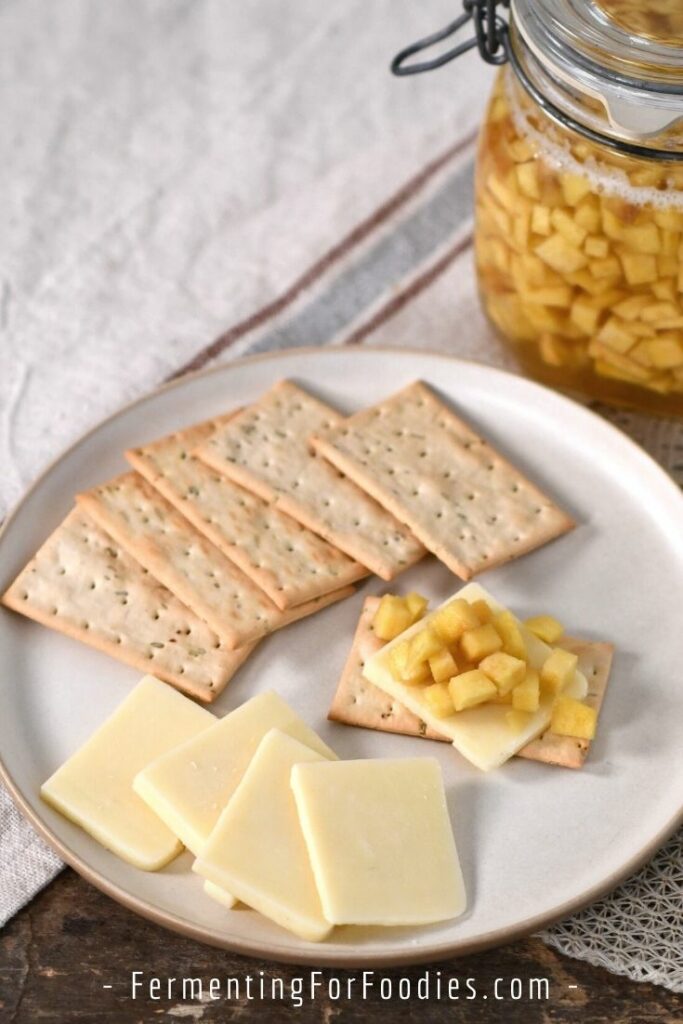
Don’t be fooled by its sweet, pear-like appearance. Quince isn’t fun to eat raw, it is hard, tart, and slightly bitter. However, it is also packed with flavor. You just have to know how to get at it.
Most quince recipes involve sweetening it with honey or sugar, then turning it into a marmalade or jelly. This is the basis of quince paste which is particularly popular in Spain, though our favorite cheese shop in Dublin always carried it as well (and dubbed it quince cheese).
Maybe it’s because I’m a fermenting foodie, but when I come across a slightly astringent fruit, I immediately try to ferment it! That’s because fermentation is a great way to mellow out really strong, tart flavors. It’s my go-to for rhubarb and cranberries. And it’s my favorite way to prepare quince.
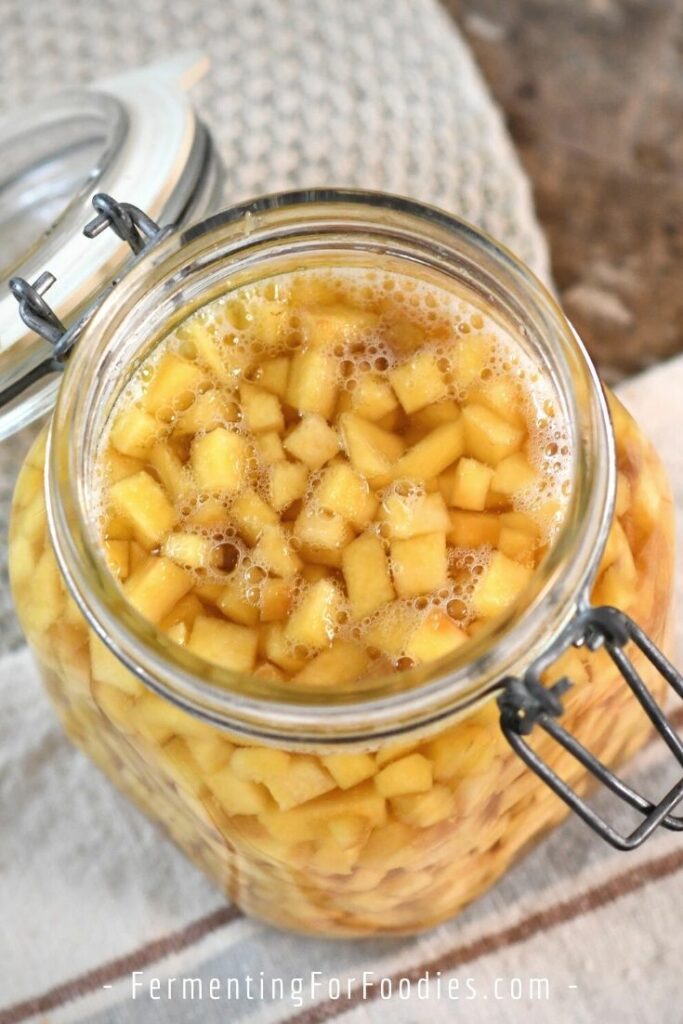
Salty or Sweet fermented quince?
There are really two ways to approach fermenting quince. I have gone with a sweet option for the recipe below because I like how it brings out the vanilla and citrus flavors. However, like all fruits and vegetables, it can also be salt-brine fermented.
To salt-brine ferment quince, simply pack it into a jar with 2.2% brine (that’s 1 Tbsp of salt for a 1 quart / 1L jar). The quince will be salty-sour and is best served as a savory condiment, similar to pickled turnips or sauerkraut.
Serving Sweet Fermented Quince
To start off, calling this ferment sweet is a bit misleading. The quince won’t be as tart and bitter after fermenting, however, it won’t be sweet either. I’m mostly calling it sweet to distinguish it from a salt ferment.
If you want to use it for sweet serving options, expect to add some sugar or honey after fermenting. This is the only way to prevent all the sugars from being consumed during the initial ferment. Feel free to add as much extra sweetness as you want. (Personally, I don’t feel the need to sweeten quince, but I’m not a sweet tooth.)
Here are a few ways to enjoy fermented quince:
- The traditional way to serve quince is with cheese. I recommend pureeing the quince and adding sugar, to taste. Then serve it as a spread on your cheeseboard. (See photo below).
- Serve fermented quince like all poached fruit, stirred into yogurt, or spooned over ice cream.
- One of my favorite reasons to ferment quince is that it becomes a lot less tart without the need to add a ton of sugar. Fermented quince is perfect for adding to apple pie or pear cobbler without needing to adjust the sugar.
- The cubes of quince remain quite firm, even after fermenting. They are delicious tossed into a salad.
- The leftover liquid is AMAZING. Mix it with sparkling water for a quince-flavored drink.
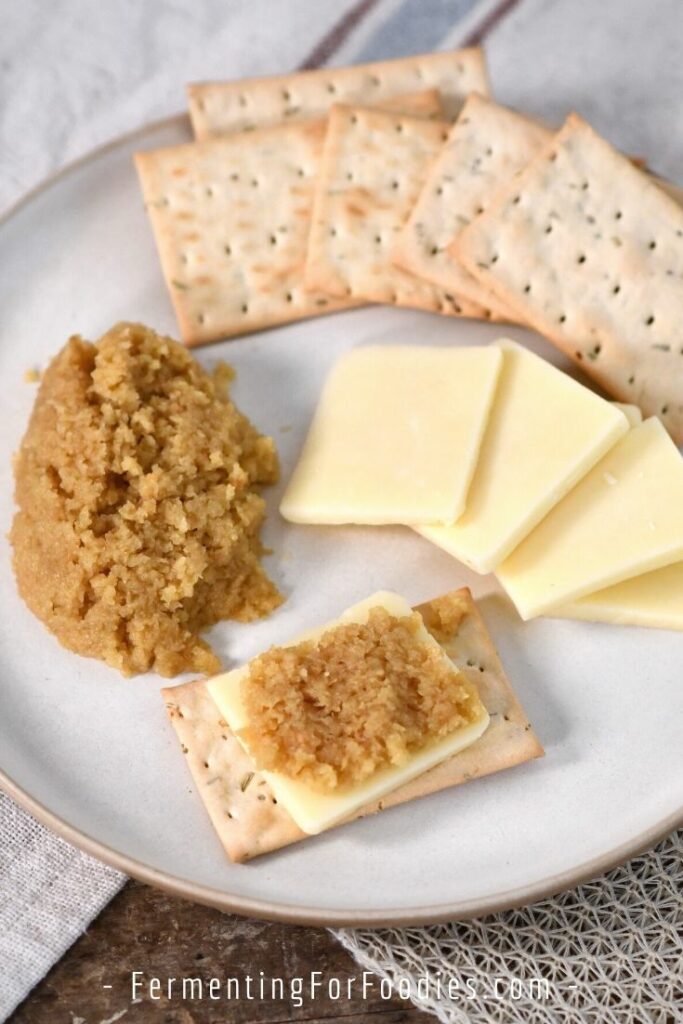
Fermented quince
Learn how to make fermented quince using several different methods. Fermenting helps to reduce the astringency of this unique and flavorful fruit. It’s the simplest way to prepare quince!
- Prep Time: 20 minutes
- Total Time: 20 minutes
- Yield: 1 quart 1x
- Category: Side dish
- Method: Fermented
- Cuisine: European
- Diet: Vegetarian
Ingredients
- 3 cups of peeled and diced quince (about 4 quince)
- 1/2 cup of raw sugar (to feed the ferment)
- 1/4 cup of starter liquid (see notes for options)
- 3/4 to 1 cup of water (chlorine-free, as needed)
Instructions
- Pack the quince into a 1-quart (1 L) jar. Sprinkle on the raw sugar. This isn’t to sweeten the quince, it’s to help feed the ferment. Pour over the starter liquid. I recommend cultured apple cider vinegar or unflavored kombucha, but there are lots of options. See the notes for more options.
- Place a weight on the quince to stop the pieces from floating, then pour over enough water to fully cover the quince.
- This is a bubbly ferment, so cap with a lid that will allow the CO2 to escape as it ferments. If you don’t have a specialty jar or lid, then simply cap with a loosely tightened lid. Place the jar somewhere dark to ferment for 5 to 7 days. Your kitchen cupboard is perfect.
- After fermenting, store the quince in the fridge with an air-tight lid. It may continue to carbonate, so be sure to release the lid every week until it stops bubbling. Fermented quince will last for several months in the fridge, provided you are careful to use a clean fork or spoon for serving.
Notes
- I like the acidity provided by ACV and kombucha for this ferment, however, it’s fine to use other yeast-based beverages like water kefir or milk kefir whey.
- I have also fermented quince with raw honey. If using raw honey, skip the sugar and add 1 cup of raw honey for both the starter liquid and the sugar. Raw honey is VERY bubbly, so be sure to keep an eye on it.
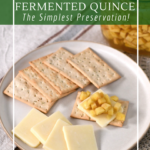
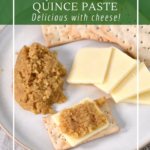
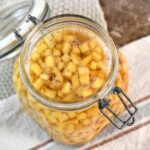
Leave a Reply